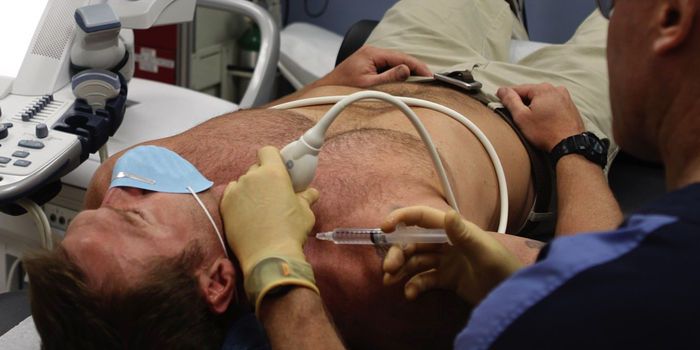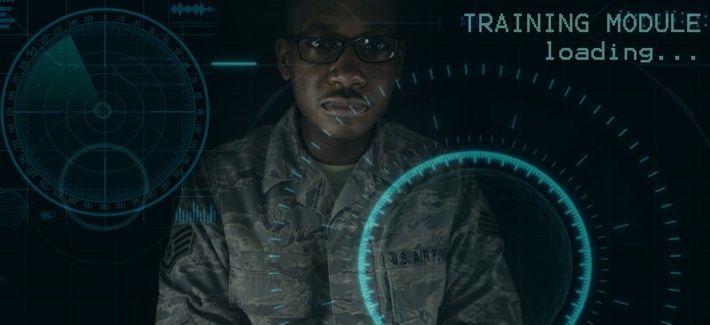An anesthetic injection, delivered by a shot to the neck, is thought to alleviate symptoms better than traditional efforts. A $2 million study will be the first large-scale randomized control research into their use.


DARPA has unveiled a system that transforms its unmanned aerial systems (UAS) into warfare machines capable of conducting different missions without human intervention.
Prior to the announcement, the compact drones were only able to carry a single-function payload, which limited their abilities to one specific task in the field.
Now, a new effort, called Converged Collaborative Elements for RF Task Operations (CONCERTO), has provided the UAS with a flexible RF architecture that uses shared hardware – allowing the devices to swap missions mid-flight.
Base jump safely in virtual reality!

Peace and love on this Memorial Day to those who served and gave their lives for freedom. My interview a while back with Express is still right on.track about the future of military and how most human soldier casualties will be a thing of the past.
THERE will be no longer be human casualties of war from wealthy countries within 10 years as advanced militaries will begin sending MACHINES to warzones, an expert has claimed.
The research agency hopes its XS-1 jumpstarts a whole new industry of very-low-cost satellite launches.
Boeing did such a good job plotting out the commercial future of a reusable satellite-launching plane that they’re going to get to build it — and just maybe, launch a whole new low-cost satellite industry.
On Thursday, the Defense Advanced Research Projects Agency, or DARPA, announced that Boeing had won the contract for Phases 2 and 3 of the XS-1 “space plane,” a reusable craft meant to launch 10 satellites in 10 days by 2021 or so, a goal that is key to the future of global military satellite communications.

Rethink Robotics co-founder and CTO, former CSAIL director and all-around robot luminary Rodney Brooks joined the Disrupt New York stage this afternoon to tackle some complex questions, ranging from robots place in the living room to the battlefield.
Brooks has a fair bit of experience in both categories, as a cofounder of iRobot, whose product offerings have ranging from vacuuming to bomb diffusion. And while his current company deals more in the realm of factory automation, a number of these ethical issues still clearly weigh heavily on the Australian roboticist.
It was a question about whether robots should be considered unfit for any human tasks that really caused Brooks to ponder their place in the world.


Biological systems don’t completely freeze up when they encounter a new situation, but computers often do.
Biological organisms are pretty good at navigating life’s unpredictability, but computers are embarrassingly bad at it.
That’s the crux of a new military research program that aims to model artificially intelligent systems after the brains of living creatures. When an organism encounters a new environment or situation, it relies on past experience to help it make a decision. Current artificial intelligence technology, on the other hand, relies on extensive training on various data sets, and if it hasn’t encountered a specific situation, it can’t select a next step.
Tracked Combat Vehicles
Multi-Utility Tactical Transport (MUTT)
MUTT is designed to be a rugged, reliable small unit force multiplier providing increased persistence, protection and projection. As a controller-less small unit robotic follower, it “Lightens the Load” throughout the full gamut of combat operations with expeditionary power. As a remote-controlled or tele-operated teammate, it provides stand-off from threats or increased projection of combat power. The MUTT is engineered to easily evolve to accommodate new payloads, new controllers and increased levels of autonomy. MUTT provides MUM-T 1.0 capability.

By Irene Klotz
CAPE CANAVERAL, Fla. (Reuters) — The U.S. military’s experimental X-37B space plane landed on Sunday at NASA’s Kennedy Space Center in Florida, completing a classified mission that lasted nearly two years, the Air Force said.
The unmanned X-37B, which resembles a miniature space shuttle, touched down at 7:47 a.m. EDT (1147 GMT) on a runway formerly used for landings of the now-mothballed space shuttles, the Air Force said in an email.